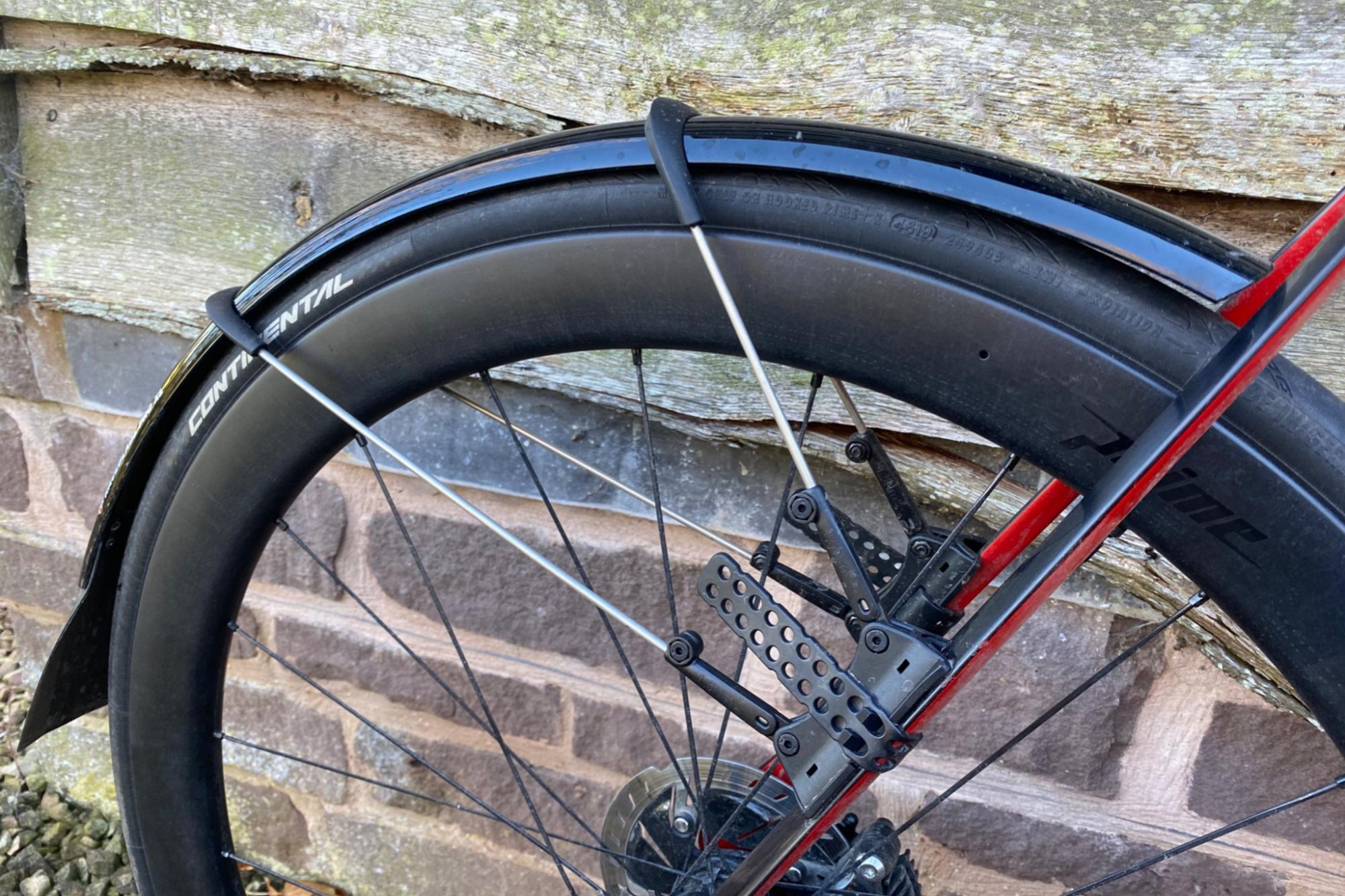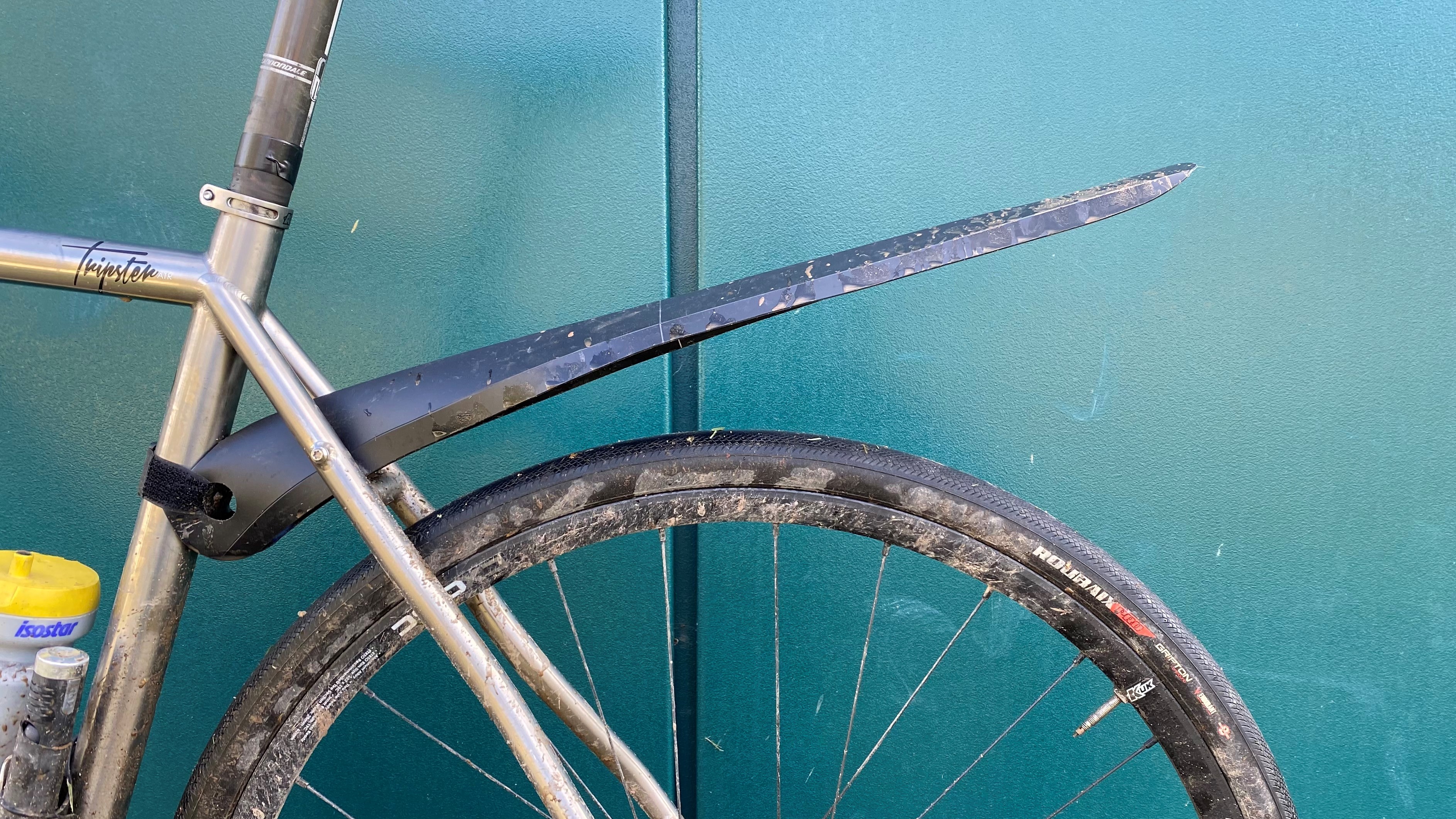
To mudguard, or not to mudguard - that is the question...
You see, mudguards may appear rather a benign topic within the cycling sphere, but despite their rather bland appearance and function, they tend to cause quite a stir within the community. For some, they are a faff, a drag, an eyesore even. Yet if you join your local Saturday club run without them on a soggy January morning in the UK, you are destined to be challenged by at least someone for being selfish, or for ruining your bike’s health.
Generally speaking, we agree here at Cycling Weekly that mudguards are a great accessory that should be more mainstream - but why aren't they?

The pros and cons
It may seem obvious, but I thought it would make sense to briefly recap what mudguards are designed to do, and where they fall short in their design.
The primary job of mudguards, or fenders, is to shield you and your bike from road debris. For all you lucky people in warmer climates, this could be dirt whilst gravel riding. For our UK readers we are, of course, talking about the conglomeration of mud, oil, water and salt that graces our roads, particularly through the winter months.
Of course, the lack of spray helps to make riding more pleasant for us, particularly when riding in a group, but it can save you money too. By protecting your clothing and keeping water, dirt, and debris off your drivetrain, component wear on our bikes can be tangibly reduced, decreasing the frequency of replacing parts such as your chain and cassette. If your bike's most common use is keeping spray off of your suit for a 9 am meeting, mudguards can prove invaluable.
However, mudguards come with their share of drawbacks, especially for the modern-day road bike. Traditional designs can be cumbersome to fit, often requiring eyelets or specific frame clearance, which many modern performance bikes lack. And even if the eyelets are present, they can still be a faff - you only have to work in a bike shop with a commuter customer base to find that out, trust me.
Clip-on alternatives, while more adaptable, tend to be less effective and prone to rattling or slipping during rides. Aesthetic purists may also dislike the way they disrupt the sleek lines of a road bike.
So why has the mudguard design been neglected?

Perhaps the biggest reason that mudguard design hasn’t been particularly revolutionised, changed or tampered with in the last few years is that it doesn’t really appear to be a priority for bike brands, particularly from the point of sale. The other reason, of course, is that the design of a mudguard is simple in its nature, leaving material and tolerance optimisation as the only real avenues for obvious improvement.
But why aren’t bike brands particularly bothered? After all, a recent poll of more than 1,000 people, which we ran on the Cycling Weekly YouTube channel, indicated that 60% of our audience use mudguards, while 27% say the main reason they don't is because they are too much of a ‘faff’.
Matt Ischt-Barnard is an Ecomm and Tech Writer here at Cycling Weekly, however having worked for many years in the industry, including in bike design, we thought he’d be well placed to shed some light on what’s holding brands back.
“The main reason mudguards don’t come as stock, or even as an option on bikes from the factory is expense," said Ischt-Barnard. Sure, mudguards don’t cost a lot of money, but it’s still an additional sum, and crucially one that isn’t currently mainstream in the world of bike design.”
“If the industry shifted its focus slightly, and changed how the market was viewed, this would certainly help. Take the car market for example, there are a number of features, aircon for example, in the automotive industry that are non-essential but improve quality of life - like mudguards - and because they are generally found all over the industry, brands tend to absorb that cost into the price of the car rather than leave it as an optional extra. If we got to this point, then more resource would end up going into mudguards, ultimately improving their function and quality.”
However there is no getting around the cost, and ultimately the introduction of offering mudguards either as an OEM part or option could further drive up the price of bikes.
“I would estimate adding mudguards to a bike in the current climate would probably cost a brand between $10 and $15, which could add as much as $50-100 to the price of a finished bike. That said, there is certainly an argument that if they become more mainstream, the expense may be reduced.”

But how about the main drawback of mudguards, actually fitting them? Sure, there are plenty of good options out there, from SKS’s one-size-fits-all Race Blades, or sturdier setups from the likes of Bontrager, but there is still room for improvement.
“There is a case for introducing a standard for mudguards on road bikes,” Ischt-Barnard explaned, “because it would at least mean that accessory brands could optimise a design knowing that it would fit a whole range of bikes.”
“Look inside the box of a standard set of mudguards, and you’ll likely be greeted with the fenders themselves, along with a whole host of different clips and brackets. If we could eliminate the need for these somehow, in place of better quality fittings that were standard, we could probably increase product quality without necessarily increasing price.
“ Finally, people might not like this, but it would really help if people stopped being weight weenies when it comes to mudguards/fenders. The vast majority of the mudguard market uses cheap plastics that can warp, go brittle, and break, all of which just make them frustrating to use. For most people, mudguards are a symptom of poorer weather - so let’s just accept the small hit to average speed.”

Where do we go from here?
Really, the improvement of mudguards relies on bike brands and accessory manufacturers making a concerted effort to work together to allow fenders to function better for the consumer.
Take the Enve Melee for instance. A race bike, with victories at WorldTour level, which still has room for mudguard/fender eyelets. It's a small detail that allows even race bike riders to fit full-length fenders when the weather turns. One that more bike brands could easily adopt.
If the accessory brands had standards to work to I have no doubt that better products with more structural rigidity could be developed.
It remains a catch twenty-two, but come on bike industry - let's make mudguards cool again!







